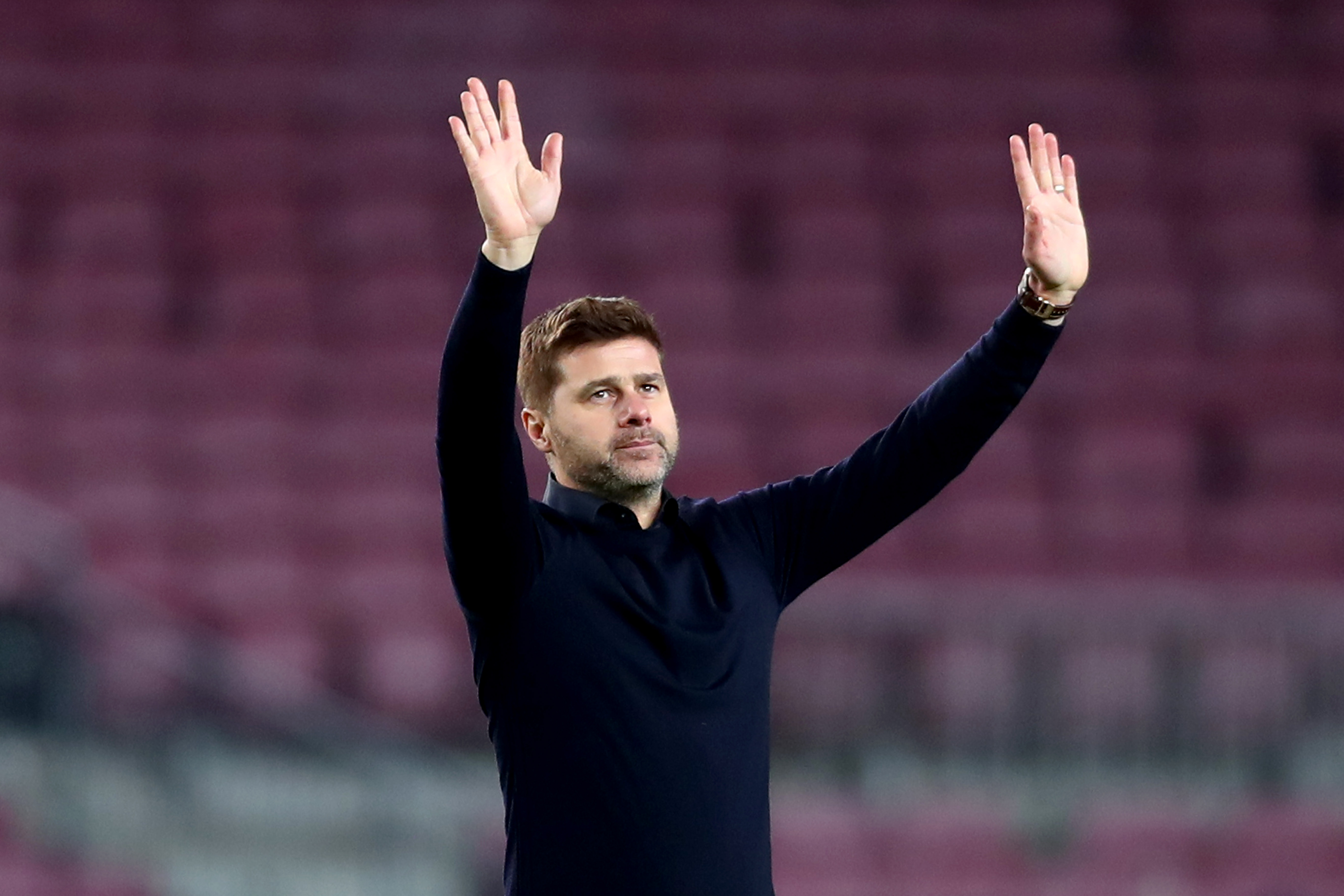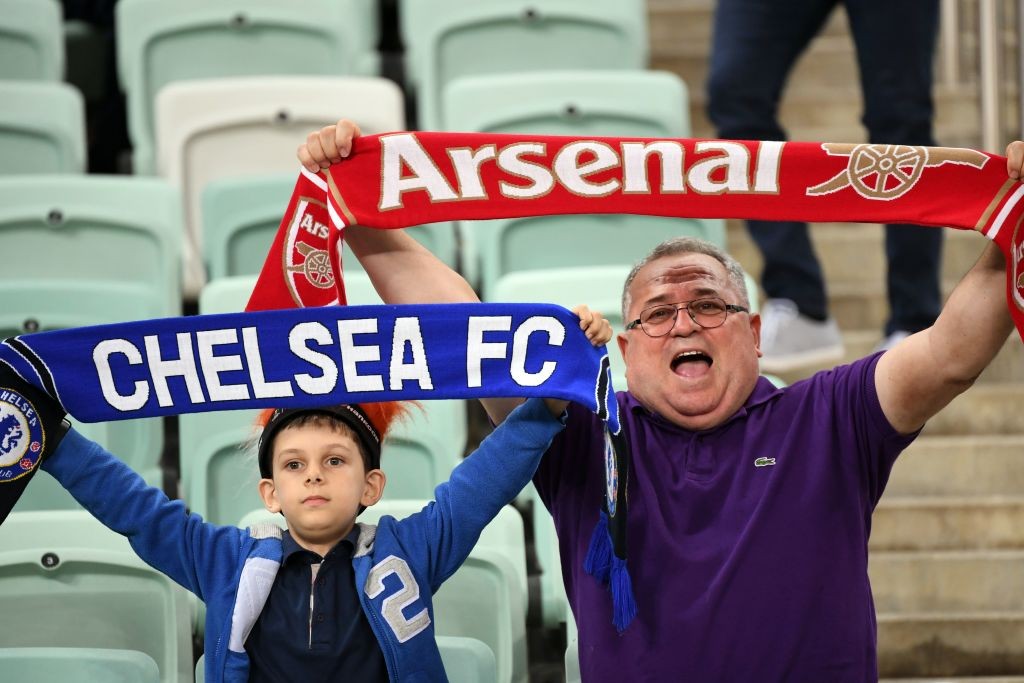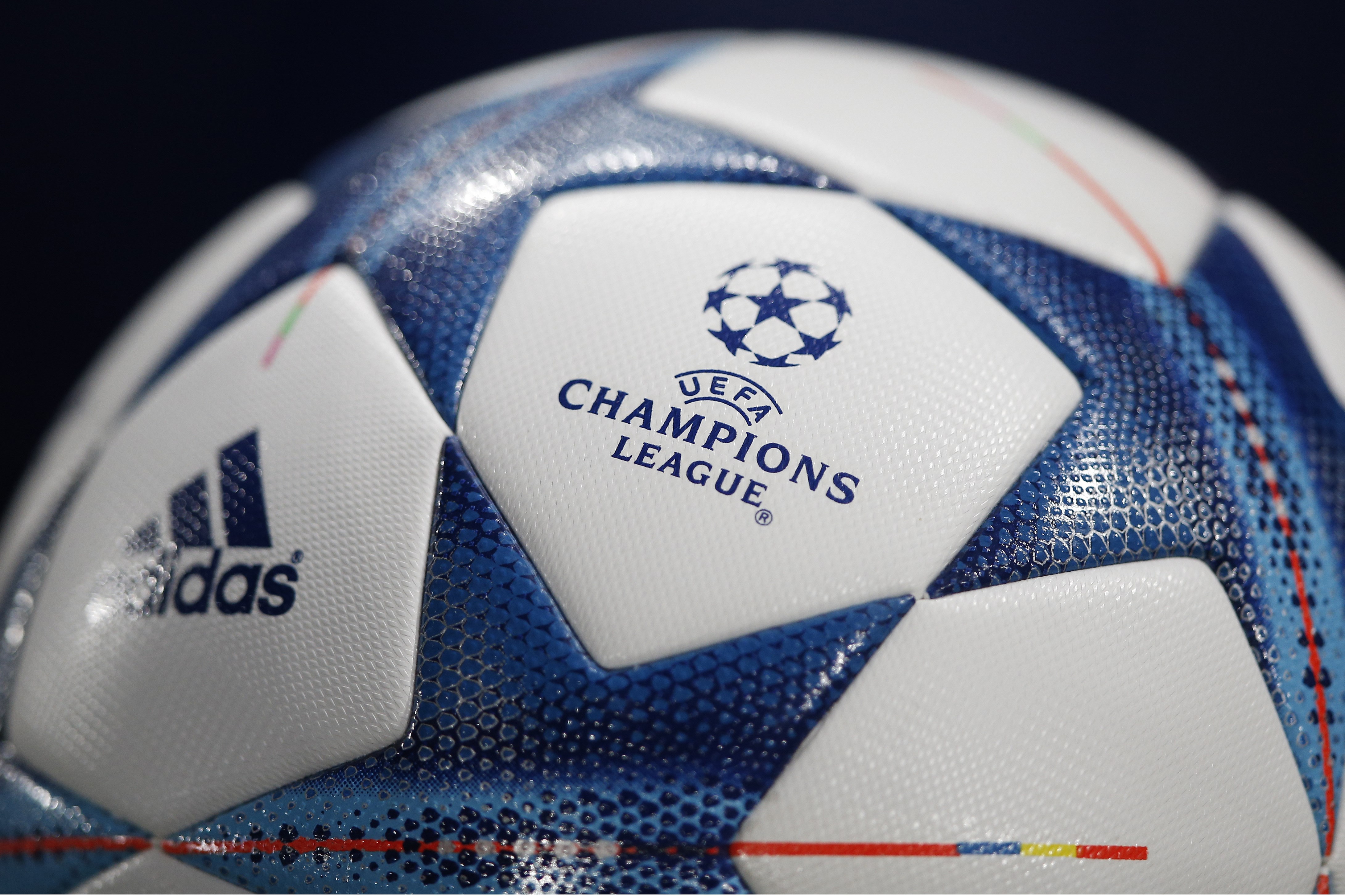Real Madrid take on Atletico Madrid in this year’s Champions league final in Milan on the 28th of May in what is a repeat of the 2014 finals. While Real’s protagonists remain unchanged, their cross town rivals have injected young blood infused with Simeone’s stubbornness and return stronger and fresher to ease the heartbreak of that gruelling night in Lisbon two years ago.
Atletico have conceded just 18 goals this season, the best goals against per game ratio in Europe’s top 5 leagues. It is no surprise that their strength lies in compactness and quick transitions. What would be intriguing to see is how Real Madrid will look to breakdown this resilient back-line, having just scored 3 goals in their past 7 meetings. Will Zidane look towards the individual brilliance of Ronaldo and Bale or will he look to tactically outclass Simeone’s RojiBlancos. Let us take a look at the key areas where the game could be won and lost.
Full-Backs key for Real Madrid
Real Madrid have clearly struggled against Atletico Madrid since Simeone took over. This is because the Los Merengues themselves are a counter attacking side and are less comfortable having huge spells of possession. The strategy is quite simple – give the ball to Ronaldo, Bale or Benzema and back them to beat their markers and get through on goal. To be fair, the strategy works quite well against teams that lack organisation and are not well drilled to maintain the defensive block. But against Atletico Madrid, who are arguably the best in maintaining that defensive block in the centre, Real have to do two things which they normally don’t:
1) Instead of their wide forwards (Ronaldo or Bale), the full backs have to be the creators, either centering or cutting balls back for their forwards to finish. Although the Real full backs join in the attacking play almost all the time, it is mostly while counter attacking when the opposing team have less numbers.
2) Maintain a good shape off the ball, especially in the centre of midfield, so as to keep the Atletico midfielders occupied in the centre rather than giving them the freedom to help out their full backs.
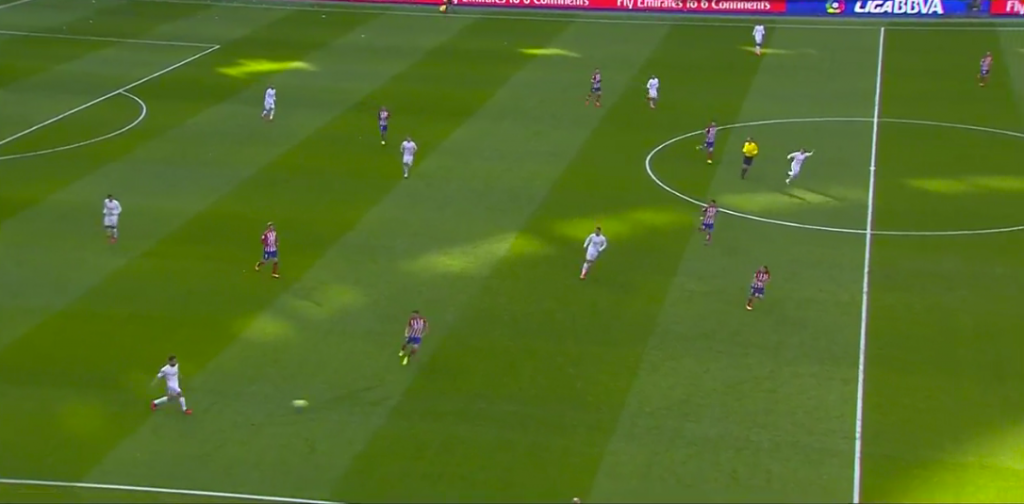
Carvajal trying to quickly release the ball during an Atletico Press
In Zidane’s first match against Simeone back in February, Marcelo was not available and was replaced by Danilo in the starting line up. Atletico did a few things to ensure that Madrid always play through their not so ball playing full backs. As seen over the past year or so, Atletico play a combination of a 4-4-2 or a 4-1-4-1 and press when the opponent is just building up play and are not settled in possession, after which they drop back and get all eleven men behind the ball. When they press, they do so in such a way that they close down the centre and one side of the pitch, thereby restricting their opponents to only play on the side where Atletico want them to play. Against Real that day, the ball mostly ended up with Carvajal or Danilo on one side of the pitch. Not having the ability to manoeuvre the ball, they used to try to quickly release the ball to the Real frontmen. This worked perfectly for Atletico as Godin and Jimenez could intercept these balls with ease.
Centro del campo (The center of the pitch)
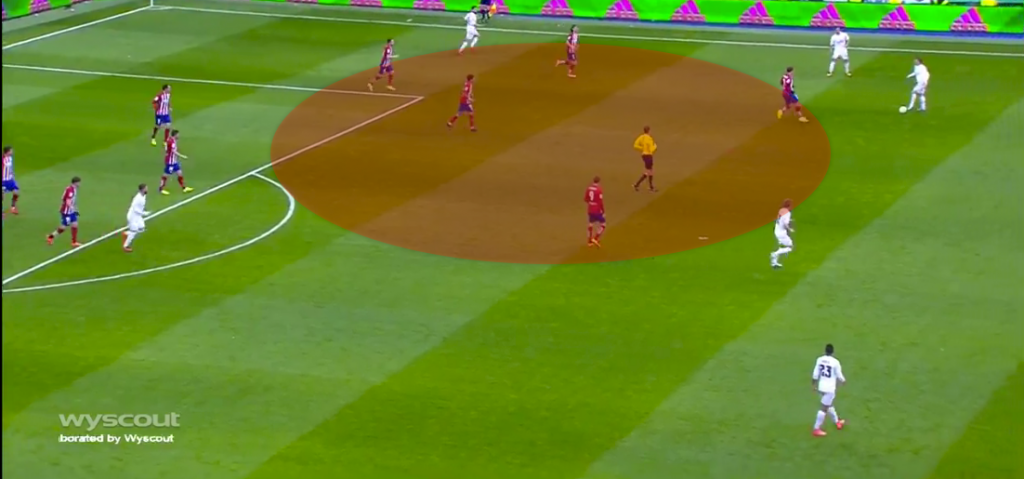
Real offering no central penetration
Another mistake which Madrid did on the night was Modric and Kroos left their position in the centre to support the full backs, leaving a big gap between Madrid’s forwards and midfielders.The centre of the pitch is likely to be crucial to decide which way the match will swing. Though the Los Blancos are not expected to have success with the ball playing down the centre, it is without it that they can make the difference. Bayern Munich, notably in the second leg against Atletico, engineered this to perfection. With Lewandowski keeping the two centre backs busy, Muller, Costa and Ribery compressed the pitch so as to keep the Atletico central midfielders occupied, allowing Lahm and Alaba to stretch the pitch. This created considerable gaps in Atletico’s central defensive block which Bayern were exploiting playing fast scintillating football. Barcelona are another team that caused Simeone problems solely because they have the ability to occupy the centre as well as have marauding full backs to stretch the field. Jordi Alba and Dani Alves provided the two assists in their last league meeting.
Atletico’s transition
Madrid’s left flank is considered one of the weak spots defensively, because of Ronaldo’s positioning more as a left forward rather than a left winger, and the attacking nature of Marcelo. Coincidentally, Atletico’s right hand side is where they are the most potent going forward due to the presence of the magnificent Antoine Griezmann, as Bayern Munich found out first hand in the semi finals. A quick one-two between Torres and Griezmann led the latter through on goal. Sergio Ramos, who plays left centre back, has been caught out on more than one occasion this season and Real Madrid have to be extremely wary of this swift Atletico transition. This is where the presence of a defensive minded midfielder comes into play. Zidane and Madrid have benefited since Casemiro has been brought into the side in place of James Rodriguez/Isco and looks certain to start in the final to offer protection to Ramos and Pepe.
Summary
Real Madrid have forwards with exceptional individual ability while Atletico have defenders who are immense in one-one situations and are well drilled as a team. Fine details are likely to decide this closely contested final with 1-0 the most likely score.

